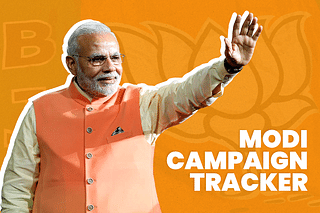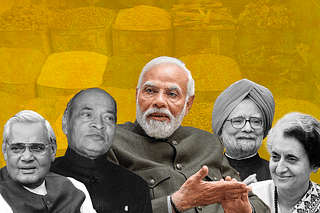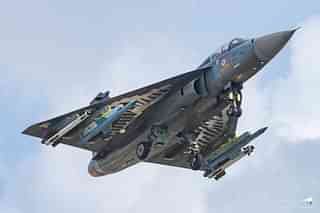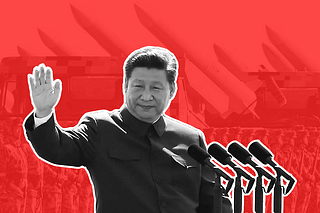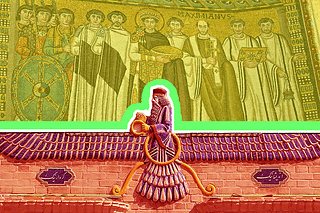Politics
The Indo-Pak Conflict 1965: Know The Broad Contours
Syed Ata Hasnain
Aug 28, 2015, 11:30 PM | Updated Feb 11, 2016, 09:30 AM IST
Save & read from anywhere!
Bookmark stories for easy access on any device or the Swarajya app.
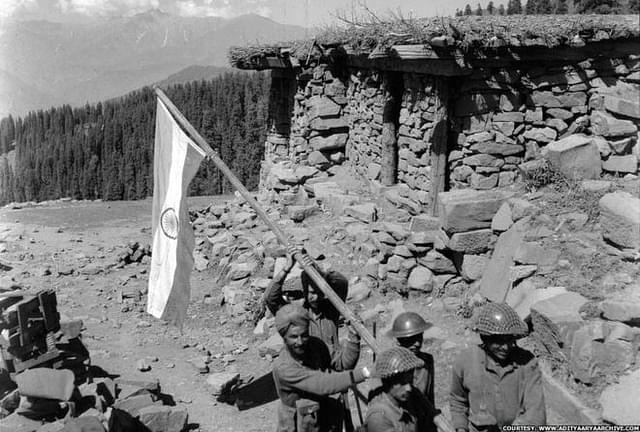
As the Golden Jubilee of the conflict with Pakistan in 1965 commences from 28 Aug 2015, Swarajya brings its readers various commentaries on the 1965 War, beginning with the backdrop to the Conflict explained in this piece by Lt Gen Syed Ata Hasnain
The reason why 28 Aug 2015 is taken as the start point of the 50th anniversary of the Indo Pak Conflict 1965 is that on this day the Indian Army achieved its outstanding victory at Haji Pir. It did take a few more days to consolidate the hold and link up with additional forces from the south but Haji Pir from this day became the symbol of Indian domination through the 1965 Conflict.
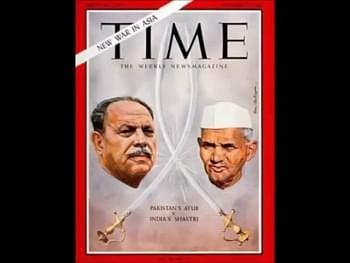
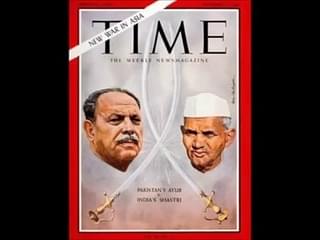
Dubious claims of Pakistan through its celebrations on 6 September each year has created a perception that India and the Indian Army were soundly defeated in this war. The only reason why India’s undoubted victory in 1965 is not celebrated as profoundly is because there are far greater and more decisive victories to celebrate – 1971 and 1999 for instance.
Yet, public perception about this war needs to be clear. Why did Pakistan launch the war, what did it hope to gain, how did the war progress, what were the results and what lessons can be learnt for the current and future environment? That is how a military analysis of wars usually takes place and that is exactly how this and subsequent essays will explain the Indo Pak Conflict of 1965 to the public.
The starting point is the War of 1947-48 over J&K initiated by Pakistan using irregulars (tribals). India’s timely action of launching the Indian Army into Srinagar airfield on 27 Oct 1947 saved J&K. The war ended with a ceasefire and India holding the bulk of the territory of J&K. Pakistan remained obsessed with the loss. Through the Fifties and early Sixties it sought to strengthen itself militarily and economically by joining the US led anti-Communist pacts – SEATO and CENTO thus securing a special relationship with the US.
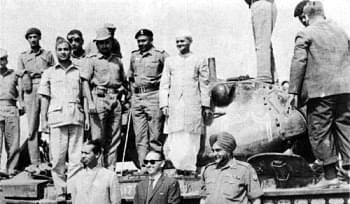
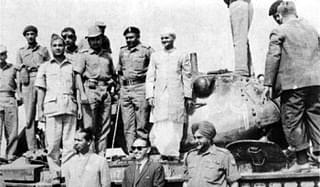
This also fetched it modern military hardware such as Patton tanks and F-86 Sabre jets. With a military leadership at the helm after the 1958 takeover by Fd Marshal Ayub Khan it assumed that it had the ability to militarily defeat India The latter followed a more benign and accommodating approach commencing from the initiative to take the J&K issue to the UN right through to the very conciliatory Indus Waters Treaty of 1960.
The Indian military had little or no role to play in strategic advice and its position in the national hierarchy itself was a diluted one. This gave the perception that India’s Armed Forces were weak, unprepared for war and would have no role in decision making severely restricting India’s military responses to provocations. The perception was roundly substantiated in late 1962 when an escalating crisis was poorly handled, military advice ignored and a grossly unprepared army was launched into a border war with China in which it was defeated. From 1962 to 1965 a few events are of importance for our analysis.
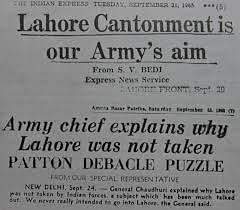
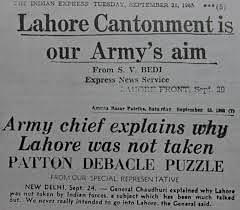
- Pakistan perceived that China as its enemy’s enemy was a friend. To firm up the relationship it illegally gave away 5000 square km of territory in Shaqsgam Valley of Gilgit Baltistan to China. It hoped that China would keep India’s potential reserves committed to the east.
- The Indian Army went into overdrive to expand its strength and absorb better hardware. Pakistan was wary of this and knew that given a few more years the Indian Army’s capability would be vastly improved.
- Nehru died in May 1964, leaving an apparent leadership void. Pakistan perceived PM Shastri as a weak leader (he was to prove otherwise) incapable of strategic decisions to expand a conflict beyond J&K to a full blown war.
- While the US had supported India in the Sino Indian border war of 1962 Pakistan was confident of its support against India. The Soviet Union was not passionate about its relationship with India but both superpowers were clear that another Indian military defeat in such a short time would spell disaster for India’s future as a nation.
It was Ayub’s Foreign Minister (FM), the ambitious Zulfiqar Bhutto who instigated him with a series of reasons as to why there could not be a more opportune moment to wrest J&K by a military action preceded by a triggered and sponsored people’s uprising. Not the least of the reasons was a self-delusional belief that the Indian jawan could not compare with the fighting prowess of the Pakistan Army’s robust Punjabi, Baluch, Pathan content.
What is surprising is that Ayub fell for it even though he had served with the British Indian Army for 19 years before he became part of the Pakistan Army. He knew the Dogra, Sikh, Rajput and other glorious regiments of the Indian Army. Yet, time was running out and he had to embed himself in Pakistan’s history as its greatest leader.
He therefore accepted his FM’s advice even though it is well known that his prudent and more professional Army Chief, Gen Musa was completely against it. Musa felt that India could not restrict the war to J&K if it was at a disadvantage at any stage. Musa’s prediction proved how right thinking military minds can predict events well ahead.
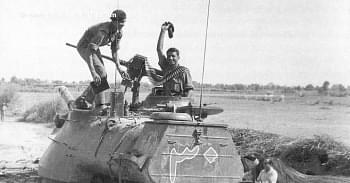
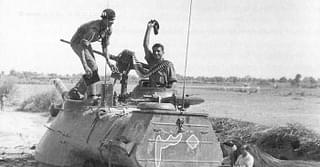
Ayub did four things to prepare for the upcoming war which he had decided to launch and decisively win in J&K.
- Firstly, the Pakistan Army activated the CFL (ceasefire line) with shelling and small arms; part of this was in Pakistan’s favorite area for intervention, Kargil; and then too along the highway through the main town.
- Secondly, it commenced composing and training a guerrilla force comprising approximately 5000-8000 mix of regular soldiers and ethnic Kashmiris from PoK, under Maj Gen Akhtar Malik (an Ahmadiyya Muslim), GOC 12 Division, Murree. It was to be launched as Operation Gibraltar (Pakistan is obsessed with events and landmarks in Spain; even Zia’s supposed mission for J&K was titled Op Topac).
- Thirdly, he prepared a plan for a rapid thrust on Akhnoor once the Gibraltar forces would start succeeding. The aim being, to capture the famous iron girder bridge over River Chenab which was the lifeline for Rajouri sector.
- Fourth and final was his decision to test the waters in Kutch well away from J&K where he could catch the Indian Army by surprise. This operation commenced in April 1965, was never pressed through and a ceasefire was brokered by the intervention of the British PM only by 01 Jul 1965.
Operation Gibraltar was launched in early Aug 1965 all across the LoC which was then held relatively thinly by India’s 19 Infantry Div (my honor to have commanded it too) and 25 Infantry Div (south of Pir Panjal). These divisions could only hold defenses, not prevent infiltration. The infiltrators were discovered by Bakarwals in the higher reaches, as it usually is. Operations to contact and battle the infiltrators took the better part of three weeks and no Kashmiris ever joined the infiltrators; in fact they joined the Indian Army in its operations.
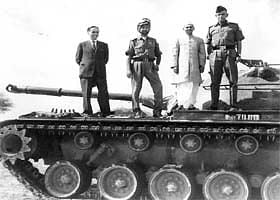
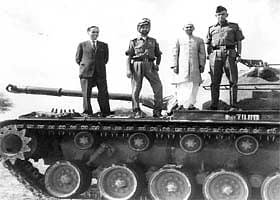
Having deduced that the bulk of the infiltration, its planning and launch was being executed from Haji Pir Bulge the Indian Army launched operations for the capture of the Haji Pir Pass and adjoining areas, in a pincer move from north and south. The initial success of the highly successful operation was achieved in just 72 hours thanks to brilliant exploitation by Maj (later Lt Gen) Ranjit Dayal of 1 Parachute Regiment who was awarded the MVC.
The loss of Haji Pir and the relative failure of Operation Gibraltar forced Ayub to execute Operation Grand Slam prematurely on 01 Sep 1965 and it took India by surprise. The Pakistan Army reached almost four kilometers from the Akhnoor bridge but a major fiasco prevented it from exploiting the initial partial success. Ayub relieved Maj Gen Akhtar Malik from command and gave the same to Maj Gen (later General) Yahya Khan.
Yahya took a 24 hour tactical pause to familiarize himself but this break in operations cost Pakistan dearly. In this time India reinforced Akhnoor, thus saving it. To relieve pressure on Akhnoor it was necessary to extend the war to Punjab and possibly further south. This is what Musa had always feared but Ayub and Bhutto had convinced him that Prime Minister Shastri did not have the confidence or personality to lead India into a General War across the IB.
Shastri ordered the Indian Army cross the IB in Punjab. The Indian Army opened two fronts; on 06 Sep in the Lahore sector and on 09 Sep in the Sialkot sector with Corps size formations. With 11 Corps (Jalandhar based) it made a broad push towards Lahore but halted on the Ichogil Canal as it forward defensive line. Although crossing over it was secured by a unit (3 Jat under Lt Col Desmond Hayde) the same could not be exploited in time. Two major tank battles (probably the largest since World War II) occurred north and south of Lahore.
The Pakistan Army launched its Patton equipped 1st Armoured Division south from Khem Karan to try and turn Indian defense. It got stuck in the quagmire of Asal Uttar where the Patton graveyard was created by Indian tank men and even infantry recoilless gunners such as CQMH Abdul Hamid, PVC of 4 Grenadiers. Almost 100 Pakistani tanks were destroyed. If this thrust had succeeded the Indian Army would have had to withdraw behind the alignment of the Beas River.
Up north 1 Corps (Strike 1) launched India’s then single armored division (1st Armd Div – Black Elephant) towards Sialkot. At Chawinda a huge tank battle resulted with both thrusts of India’s 1 Armd Div heavily contested by Pakistan’s 6 Armored Div. The operations were stalemated but these ensured that the operations towards Akhnoor further north were also completed stalled.
In Rajasthan sector the Pakistan Army managed to succeed in capturing Munabao railway station and made an incursion up to Miajlar. The truth of the matter remains that in 1965 the desert was considered too remote for battle by both sides, lines of communication were relatively nonexistent and there wasn’t enough armor to exploit any gains. The Rajasthan sector saw a major battle at Gadra Road but strategic gains on both sides were hardly any.
Detailed deliberations on the various sectors will be included in subsequent write ups. More important is not to leave the reader with doubts about who won the war. Comparisons of losses and gains can indicate that but only to some extent. Published figures show the Indian army suffered 3,000 dead, while Pakistan suffered 3,800. The Indian army was in possession of 1,920 square km of Pakistani territory and the Pakistan army held 550 square km of Indian territory.
The territory occupied by India was mainly in the fertile Sialkot, Lahore and Kashmir sectors while Pakistani land gains were primarily south in deserts opposite to Sindh and in Akhnoor sector. The Air Forces losses were less in percentage terms but higher in numbers. Most of the territorial gains and losses were nullified by the decisions at Tashkent in Jan 1966 where PM Shastri signed the Tashkent Declaration on 10 Jan 1965.
There is much more to victory than what capture of territory involves. India’s claim to victory in 1965 is substantiated by the fact that Pakistan’s war aim of wresting J&K and preventing India from expanding the war to the IB was completely thwarted. In fact the Indian Army captured the iconic landmark of Haji Pir and the people of J&K never arose to support the nefarious aims of Gibraltar Force.
The war on balance was thus won by India setting the stage for the next confrontation in 1971 when Pakistan would be cut to half its size. Many lessons emerged from the operations of Apr to Sep 1965 which apply to the day. These will be discussed in a subsequent piece. Suffice to leave the reader with the idea that Pakistan was, is and will always remain obsessed with J&K. That is the situation with the ongoing proxy war even today.
Save & read from anywhere!
Bookmark stories for easy access on any device or the Swarajya app.
The writer is a former GOC of India’s Srinagar based 15 Corps, now associated with Vivekanand International Foundation and the Institute of Peace and Conflict Studies.
Introducing ElectionsHQ + 50 Ground Reports Project
The 2024 elections might seem easy to guess, but there are some important questions that shouldn't be missed.
Do freebies still sway voters? Do people prioritise infrastructure when voting? How will Punjab vote?
The answers to these questions provide great insights into where we, as a country, are headed in the years to come.
Swarajya is starting a project with an aim to do 50 solid ground stories and a smart commentary service on WhatsApp, a one-of-a-kind. We'd love your support during this election season.
Click below to contribute.

